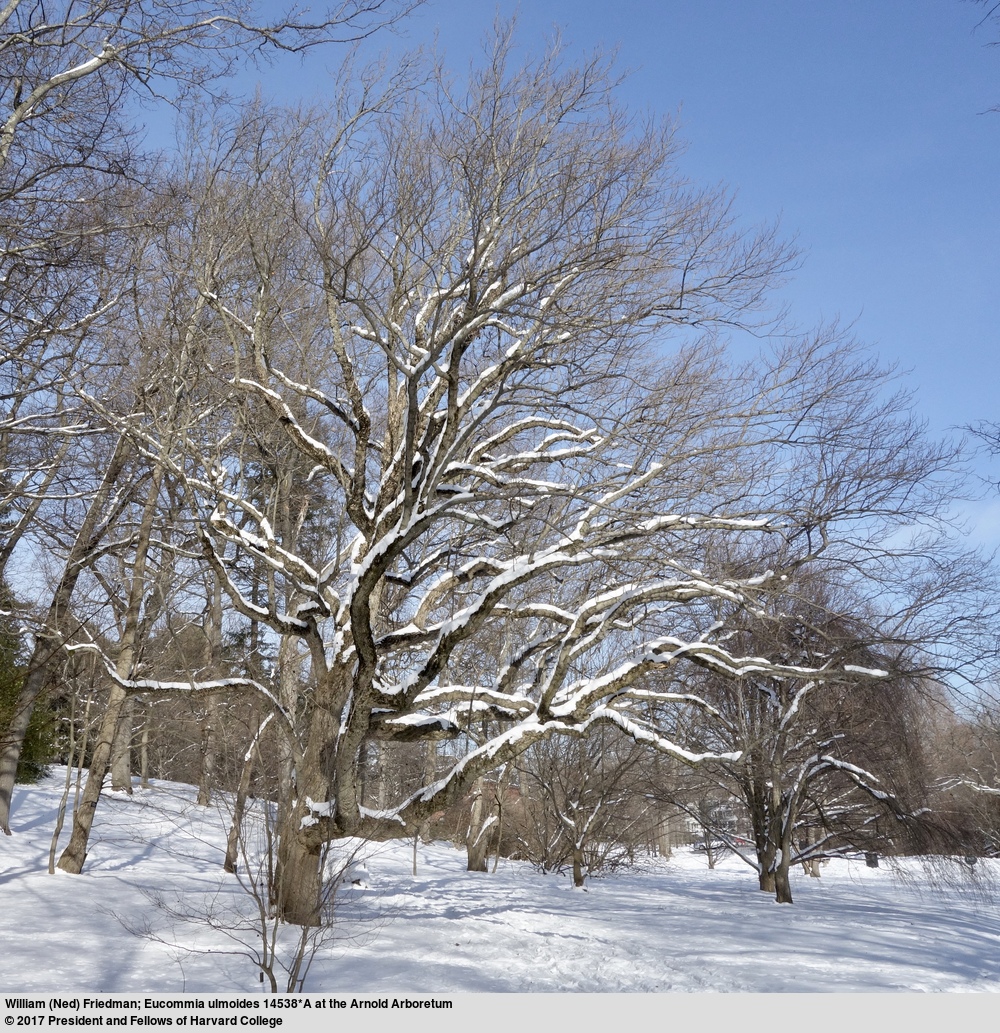Eucommia
Sponsor
Kindly sponsored by
Peter Hoffmann
Credits
Julian Sutton (2023)
Recommended citation
Sutton, J. (2023), 'Eucommia' from the website Trees and Shrubs Online (treesandshrubsonline.
Family
- Eucommiaceae
A single species of dioecious, deciduous tree endemic to China.
The single living species, Eucommia ulmoides, is of great interest and economic value as a medicinal plant in China, and as a hardy rubber-producing tree. As an ornamental it is potentially handsome if never spectacular.
The genus was described by Oliver (1890); the name derives from the Ancient Greek eu (good) and kommi (gum), referring to its abundant latex. Its family relationships were long uncertain. Oliver at first tentatively suggested Euphorbiaceae, later Trochodendraceae. Affinities with the Eupteleaceae, Hamamelidaceae or Saxifragaceae were other early ideas, but for most of its taxonomic history this apparently isolated species has been given its own monotypic family, Eucommiaceae (Andrews 2009; Stevens 2023). A suite of molecular studies together place the family in the Order Garryales, along with Garryaceae (Garrya and Aucuba), a conclusion supported by the presence of aucubin (an iridoid) in Eucommia (Stevens 2023).
Eucommia had a much wider distribution in the Northern Hemisphere before the Pleistocene, with its climatic upheavals. It is now one of central China’s Tertiary relict species – Davidia is another more celebrated example. Fossil leaves, wood, and especially the distinctive fruits, of several extinct species are known from North America, East and Central Asia, and Europe, dating from at least the Eocene (56–34 MYA) onwards (Manchester et al. 2009). However, fossil lactifers from Eocene lignite deposits in Germany, known as Affenhaar (monkey hair), which some have linked to Eucommia (Bean 1981), are now thought to come from some other sort of plant yet to be determined (McCoy et al. 2021).


